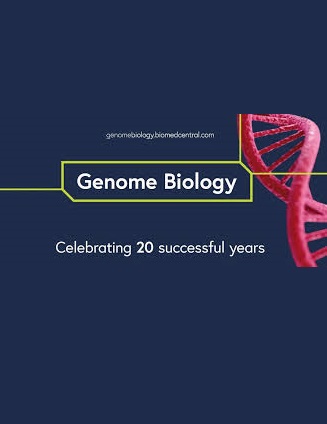全球DNA损伤耐受缺陷的分子依赖性和基因组后果
IF 10.1
1区 生物学
Q1 BIOTECHNOLOGY & APPLIED MICROBIOLOGY
引用次数: 0
摘要
DNA损伤耐受性(DDT)使复制能够在叉子失速病变的存在下继续进行。在哺乳动物细胞中,DDT由两种独立的途径调控,分别由聚合酶REV1和泛素化PCNA控制。为了确定全局DDT缺陷的分子和基因组影响,我们研究了小鼠细胞中的PcnaK164R/−;Rev1 - /−化合物突变体。双突变细胞表现出增加的复制压力,对基因毒性药物的超敏性,复制速度和重发。全基因组CRISPR-Cas9筛选显示双突变细胞严格依赖CST复合体,其中CST促进叉的稳定性。全基因组测序表明,这种双突变DDT缺陷倾向于产生0.4-4.0 kbp的复制胁迫诱导的大缺失,定义为3型缺失。这些缺失的连接断裂位点显示了1 - 2个碱基对的微同源性偏好,与较小的1型和2型缺失不同。这些差异特征表明存在分子上不同的缺失途径。3型缺失在人类肿瘤中大量存在,可以主导缺失景观,并与DNA损伤反应状态和治疗方式相关。我们的数据强调了DDT系统对基因组维持和3型缺失的重要贡献,这是复制应激的突变特征。3型缺失的独特特征暗示在小鼠和人类中存在一种新的缺失途径,该途径可被DDT抵消。本文章由计算机程序翻译,如有差异,请以英文原文为准。
Molecular dependencies and genomic consequences of a global DNA damage tolerance defect
DNA damage tolerance (DDT) enables replication to continue in the presence of fork stalling lesions. In mammalian cells, DDT is regulated by two independent pathways, controlled by the polymerase REV1 and ubiquitinated PCNA, respectively. To determine the molecular and genomic impact of a global DDT defect, we studied PcnaK164R/−;Rev1−/− compound mutants in mouse cells. Double-mutant cells display increased replication stress, hypersensitivity to genotoxic agents, replication speed, and repriming. A whole-genome CRISPR-Cas9 screen revealed a strict reliance of double-mutant cells on the CST complex, where CST promotes fork stability. Whole-genome sequencing indicated that this double-mutant DDT defect favors the generation of large, replication-stress inducible deletions of 0.4–4.0 kbp, defined as type 3 deletions. Junction break sites of these deletions reveal microhomology preferences of 1–2 base pairs, differing from the smaller type 1 and type 2 deletions. These differential characteristics suggest the existence of molecularly distinct deletion pathways. Type 3 deletions are abundant in human tumors, can dominate the deletion landscape, and are associated with DNA damage response status and treatment modality. Our data highlight the essential contribution of the DDT system to genome maintenance and type 3 deletions as mutational signature of replication stress. The unique characteristics of type 3 deletions implicate the existence of a novel deletion pathway in mice and humans that is counteracted by DDT.
求助全文
通过发布文献求助,成功后即可免费获取论文全文。
去求助
来源期刊

Genome Biology
Biochemistry, Genetics and Molecular Biology-Genetics
CiteScore
21.00
自引率
3.30%
发文量
241
审稿时长
2 months
期刊介绍:
Genome Biology stands as a premier platform for exceptional research across all domains of biology and biomedicine, explored through a genomic and post-genomic lens.
With an impressive impact factor of 12.3 (2022),* the journal secures its position as the 3rd-ranked research journal in the Genetics and Heredity category and the 2nd-ranked research journal in the Biotechnology and Applied Microbiology category by Thomson Reuters. Notably, Genome Biology holds the distinction of being the highest-ranked open-access journal in this category.
Our dedicated team of highly trained in-house Editors collaborates closely with our esteemed Editorial Board of international experts, ensuring the journal remains on the forefront of scientific advances and community standards. Regular engagement with researchers at conferences and institute visits underscores our commitment to staying abreast of the latest developments in the field.
 求助内容:
求助内容: 应助结果提醒方式:
应助结果提醒方式:


